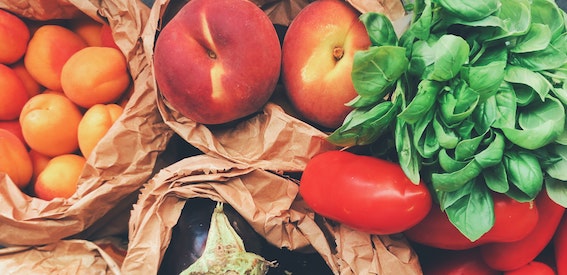
Clinic News
It’s been an exciting month for the clinic, Alex collected the Royal College of Chiropractors Clinical Management Quality Mark (CMQM) award at the AGM in London - this represents nine consecutive years of the clinic meeting the standards set by the Royal College of Chiropractors. It is always a team effort and there is a huge degree of input from patients too, so thank you to all who helped us achieve this. Alex was also promoted to Pregnancy and Paediatric Faculty specialist Chair. This will be a three year post running the specialist faculty, including organising education seminars to enable members to progress through membership of the faculty, recruiting new members and being involved in the instigation and development of research for our speciality. Don’t worry she’ll still be seeing her patients – there will be no change in her clinic diary.
We are pleased to announce that Jenny Flowers will be returning from her maternity leave on Monday 1st April 2019- her diary is now fully open so gives reception a call to get your appointments booked in. Any appointments pre booked with Wendy will now transfer across to Jenny for the same time and date, so don't worry.
There is also a review of the massage therapist prices from the 1st April 2019 please see our website or clinic notice boards for details.
Look out for Andrew's challenge, how to have better posture at work, the hidden dangers of handbags and high heels and beating that inflammatory pain by changing what you eat, all in this month's edition.

February Challenge
Very often there can be tightness in the front of your thigh and hip flexors (the quads / quadriceps muscles) which can cause your pelvis to tilt forwards as they are pulling on the front of it down towards your knees.
Test
- Make sure you are standing up completely straight and do not allow your pelvis or hips to twist or lean forwards
- Bring your leg behind you and grab the heel
- Pull the foot towards the buttock and see if you can get your heel to contact the buttock
- Check the other side for symmetry
Results?
If you cannot touch heel to bum without twisting, or you there is an uneven stretch, then either do the above as a stretch or speak to your Chiropractor for specific advice!

Take Care of Your Back at Work
An NHS study revealed that half of us are affected by back pain and 8 million working days are lost due to work-related back pain each year. But here are many ways to avoid and ease back pain when working:
- Be aware of your posture; when standing try to distribute your weight evenly across the front, back and sides of your feet. When seated, sit up straight; align the ears, shoulders and hips in a vertical line as much as possible.
- Avoid prolonged positions; even a good sitting position can be tiring and put a strain on muscles. Try alternating sitting at the front of the chair with sitting back against it. Try to also get up and move about every 30minutes. Take 2 minutes to stretch, stand or go for a short walk, this will not only stimulate your muscles, but also your mind!
- Avoid unbalanced posture; such as sitting with your legs crossed, leaning to one side, hunching the shoulders forward or tilting the head up.
- Position your monitor at your natural resting-eye-height. This will avoid straining the neck as you look up or hunch down to your screen.
- Exercise regularly; a good combination of cardio and strength training will strengthen muscles and protect against back injuries.
- Get moving: the body was designed to move, and it is so important to keep moving. Even if you are suffering from back or neck pain, limiting movement will only exacerbate the symptoms. Try to do lots of gentle movement within a relative pain free zone, in order to prevent everything from locking up.
The most common cause of neck pain is when you hold your head forward for long periods of time. This places undue stress on the joints of the lower neck, as well as muscles of the neck and shoulders. By trying to pull the neck and shoulders back into alignment, and doing some nice gentle stretches for the neck and chest, you can easily correct this, before it becomes too problematic.

Bags, heels and back pain
Could your wardrobe be causing you back pain?
From pencil skirts to skinny jeans, there are a range of everyday outfits that can be the cause for bad necks, painful backs and aching knees.
High heels
Wearing high heels more regularly than not can be bad for your feet and back. Hammer toes, bunions, shortened calf muscles; the list of ailments caused by wearing shoes with too high heels goes on, including circulation problems, knee damage and back pain. Eliminate damage by reducing the amount you wear high heels. Opting to wear trainers while walking long distances, such as to and from work, will help matters, as well as sticking to a small heel as much as possible.
Oversized bags
You may already be aware of the danger of lugging a heavy bag over one shoulder but did you know that carrying it in the crook of your forearm could be even worse? This one-sided lift can increase the risk of muscle strain and pain in the neck, shoulders and upper back and even trigger tension headaches. Top tips? Don’t overfill your bag, hold it by the handle or, if you must wear it over one shoulder, change sides regularly.
Skinny jeans
Wearing jeans that grip around the waist, hips, thighs and calves can reduce your mobility, even if it’s just walking that you’re doing. Restrictive clothing can lead to a loss of ‘bounce’ in your stride and the natural shock-absorbing qualities in your walk, causing pressure in your joints.
Pencil skirts
Tight trousers and pencil skirts can damage muscles and joints as much as high heels and heavy bags, leaving you in pain. Their straight-sided, slim fit clamps your knees together, making it harder to balance and bend. Wearing a tight skirt regularly could lead to a pulled muscle or even disc problems because of the limitations they put on your ability to move.
Heavy necklaces
Our necks have to struggle to cope with the strain of the weight of an average head (around 10lb to 12lb – roughly equivalent to five bags of sugar) day in day out, so adding a heavy necklace can really heighten the pressure. Not only this, wearing a heavy necklace also pulls the neck forward or backwards, away from its point of neutral balance. This can lead to neck tension and pain, and long-term could encourage a slouched posture and damage to the back.
Supportive Underwear
While wearing supportive underwear can have beneficial effects on your posture, as it acts like the compression clothing top athletes wear to improve performance by increasing blood and lymphatic flow, choosing the wrong variety will cause trouble. Wedging yourself into something too tight, which contains low amounts of flexible lycra will not only restrict breathing but, if it’s tight enough, also limit the movement in the middle of your body, placing abnormal loads on parts of your spine. Restricting movement to sections of your spine means that other parts have to compensate. This usually leads to pain and, ultimately, damage in your upper or lower back.

5 tips to reduce inflammation
Inflammation: it’s a natural process that happens in our body to help us heal from injury and help our immune system fight off invaders.
But too much inflammation – or inflammation that lasts longer than it should – can be a problem. Most importantly for chiropractors, inflammation is a factor in many types of pain, including joint and muscle pain, arthritis, back pain, and pain from injury that won’t go away.
Inflammation overload also plays a role in other problems such as skin conditions, and even – in an ‘invisible’ form – in serious health conditions such as heart disease, diabetes and Alzheimer’s disease.
While there are many things that can contribute to too much inflammation, one factor we can control is what we eat and drink.
So, here are five food-related tips to help you keep inflammation at bay.
- Load up on colourful veg and fruit
Most vegetables and fruit have great anti-inflammatory properties, thanks to their unique ‘phytonutrients’ such as flavonoids and carotenoids. These compounds are often responsible for vivid colours of fruit and veg, so you’ll find tons of flavonoids in purples and reds (think red cabbage, berries and pomegranate) and lots of carotenoids in oranges, light reds, yellows and greens (e.g. carrots, squash, tomatoes, peppers, and dark green leafy veg such as kale and spinach). So, think about ‘eating a rainbow’ of veg and fruit: it’s not just a cliché, especially when it comes to beating inflammation.
Ideally, eat more vegetables than fruit, as the sugars in fruit can add up. And eat wholefruit rather than drinking it in juice form.

- Eat lots of oily fish
Oily fish are anti-inflammatory superheroes thanks to the omega-3 fats they contain.
Oily fish include salmon, sardines, mackerel, anchovies, herring, trout and fresh (not tinned) tuna. Aim to eat three servings a week of one or more of these fish to build up your omega-3 stores.
Plant omega-3s such as those found in flaxseeds and chia seeds and their oils don’t have exactly the same benefits, as they provide a different type of omega-3. But they’re still healthy choices to include in our diet, and can be a substitute if you can’t eat fish.
- Keep it ‘real’
Generally speaking, the less you rely on processed foods, and the more you eat ‘real’ foods, the better.
‘Processed’ foods tends to mean anything that’s been made in a factory instead of being brought to you fresh or simply packaged. As well as junk foods, think supermarket baked goods, processed cheeses, most breakfast cereals, packet soups and ready meals. Not only are they generally low in natural vitamins, minerals and anti-inflammatory nutrients, they often contain added sugar or salt, as well as chemical additives that may do us more harm than good.
‘Real foods’, on the other hand, include vegetables and fruit, whole grains such as brown rice, beans and lentils, unroasted nuts and seeds, and minimally processed animal foods such as eggs, fish, whole cuts of meat and pure cheese or milk.
- Switch your vegetable cooking oils
It is best to switch all refined cooking oils such as sunflower oil and pretty much anything just labelled as ‘vegetable oil’ for more healthy options.
But how can they be bad for us, when they’ve long been touted as a healthy alternative?
Well, one problem is that polyunsaturated fats in their refined liquid form are quite fragile. When they’re heated to high temperatures during the refining process and cooking, they can easily become damaged. These damaged molecules may trigger more inflammation or ‘free radical’ damage in our own bodies when we consume too many of them.
The second problem is that vegetable oils tend to contain a very high proportion of omega-6 fatty acids. Now, while these areessential fats, when we get a lot of them in our diet they can have an overall pro-inflammatory effect (i.e. encouraging inflammation), especially when we’re getting a lot more omega-6 than omega-3 fatty acids.
So what can you use instead of vegetable oil? Well, a good choice for cooking is coconut oil. It contains primarily saturated fats, which – contrary to what you might think – are actually the safest and healthiest fats for high-temperature cooking such as roasting, frying or stir-frying, as they’re stable and have a high smoke point.
Olive oil is a great option for lower-temperature sautéing and for drizzling on salads or using in dressings. Olive oil is made up primarily of monounsaturated fats, which are more stable than polyunsaturated, and has been linked to numerous health benefits – for our heart in particular.

- Spice it up
Many spices have natural anti-inflammatory activity, with winners including turmeric and ginger. Add them liberally to homemade curries and Asian dishes (use coconut oil rather than vegetable oils, of course!). Make them into hot drinks, such as homemade turmeric latte or fresh ginger tea; or find them in the form of herbal teas.
Tip: if you’re buying powdered spices, seek out organic rather than just settling for your average supermarket version for the greatest benefits. And note the colour of your turmeric: it should be an almost fluorescent orange-yellow colour if it’s a good-quality one.







